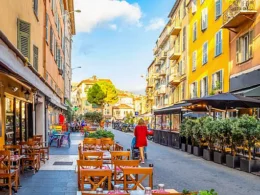Navigating the intricacies of French dining etiquette can be a daunting task for tourists. Understanding the cultural norms and traditions surrounding dining is essential to fully immerse oneself in the French culinary experience.
From proper seating and greetings to navigating the cheese course, the nuances of French dining etiquette can greatly enhance a visitor’s dining experience.
This introduction provides an overview of the key aspects of French dining etiquette that tourists should be mindful of, ensuring a seamless and respectful interaction with the rich culinary heritage of France.
Seating and Greetings
When dining in France, it is customary to greet your host and fellow diners upon arrival, as this is often a frequent practice in French dining etiquette. After greeting, seating arrangements are typically determined by the host, with the most honored guest usually being seated to the right of the host.
Formal introductions follow, with a handshake and the use of titles like ‘Monsieur’ or ‘Madame’ followed by the person’s last name. It is important to maintain a respectful and polite demeanor during these introductions.
In more formal settings, a small gift or flowers may be presented to the host as a gesture of appreciation. Understanding and adhering to these practices will not only show respect for the French dining culture but also enhance the overall dining experience for both the guests and the hosts.
Ordering and Service
Upon being seated at a French restaurant, tourists should wait to be attended to by the server, as it is customary for the server to initiate the ordering process.
When ordering food, it is common to ask for wine pairing suggestions to complement the meal. French cuisine often emphasizes the harmony between food and wine, and servers are knowledgeable about the best pairings.
Additionally, tipping customs in France differ from those in other countries. A service charge is typically included in the bill, but it is still appreciated to round up the total or leave a small additional tip for exceptional service. However, tipping is not as prevalent in France as it is in some other countries, and it is not obligatory.
Understanding and respecting these aspects of ordering and service will enhance the dining experience for tourists in French restaurants.
Table Manners and Etiquette
One important aspect of French dining etiquette for tourists is the strict adherence to proper table manners and etiquette. When dining in France, tourists are expected to follow specific customs to show respect for the culinary culture.
Key elements of table manners and etiquette include:
- Wine Pairing: In France, wine is an integral part of the dining experience. It is essential to understand the basics of wine pairing to complement the flavors of the meal properly.
- Dress Code: French dining establishments often uphold a formal dress code. Tourists should dress appropriately, avoiding casual attire, to align with the sophisticated ambiance of many restaurants.
- Utensil Usage: Understanding the appropriate use of utensils demonstrates respect for the dining experience and helps tourists navigate through multi-course meals with ease.
Adhering to these practices enhances the overall dining experience and shows consideration for French customs.
Navigating the Cheese Course
How should tourists navigate the cheese course in French dining etiquette?
The cheese course holds a significant place in French cuisine and is a revered part of the dining experience. When presented with a selection of cheeses, it’s customary to taste each one, starting with the mildest and moving towards the strongest. Cheese pairings with appropriate wine are essential. For example, pairing Camembert with a glass of fruity red wine enhances the flavors.
The cultural significance of the cheese course lies in its representation of French terroir and gastronomic heritage. Each cheese reflects the unique characteristics of the region it comes from, offering a sensory journey through the diverse landscapes of France. Understanding and appreciating this aspect adds depth to the dining experience and demonstrates respect for French culinary traditions.
Frequently Asked Questions
What Are Some Common French Phrases or Expressions That I Should Use When Dining in France?
When dining in France, it’s essential to use common French phrases for ordering and making polite requests in French. Familiarizing with French dining vocabulary and ordering etiquette can enhance the dining experience and show cultural respect.
Are There Any Specific Rules or Customs Regarding Tipping at Restaurants in France?
Tipping customs in France vary, as service gratuity is often included in the bill. However, it is customary to round up or leave a small additional amount for exceptional service. Takeaway etiquette typically does not require tipping.
Can I Ask for Modifications to My Dish or Make Special Requests When Ordering at a French Restaurant?
When dining at a French restaurant, it is acceptable to request modifications to your dish or make special dietary requests. However, it’s important to be mindful of cultural differences and potential language barriers when communicating your needs.
Is It Considered Rude to Ask for a To-Go Box or Doggy Bag at a Restaurant in France?
In France, cultural expectations around dining etiquette discourage requesting a to-go box or doggy bag. This stems from a desire to minimize food waste and the environmental impact of takeaway culture, and is generally considered impolite.
What Are Some Traditional French Desserts That I Should Try While Dining in France?
When dining in France, be sure to indulge in traditional French desserts such as crème brûlée, tarte Tatin, and macarons. French pastry culture is rich, and it’s customary to savor these delectable treats as a delightful end to a meal.










